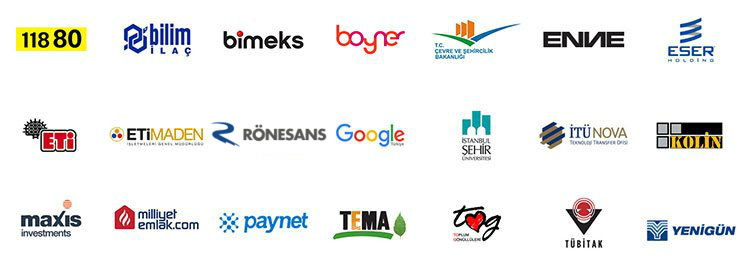
In the world of project management, some tools carry weight simply by their names.
Microsoft Project and Oracle Primavera P6 are undoubtedly the two most well-known and powerful players in this field.
Both offer comprehensive solutions designed to plan, execute and monitor projects.
But this superficial similarity hides two fundamentally different worlds built for very different philosophies, capabilities, and uses.
Choosing the right project planning software is a critical decision for the success of your project, and understanding the differences between these two giants is the first step to making the right decision.
This guide will put Primavera P6 and MS Project on the table, making it clear which tool shines in which scenario and which one fits your project's DNA better.
Working with the Wrong Tool: Project Requirements and Software Incompatibility
One of the main challenges that every project manager faces in their career is choosing the right tool for the right job.
Project management software is no exception.
With these two powerful options available in the market, many organizations and professionals remain confused about which one to choose.
This confusion often leads to a mismatch between the specific needs of the project and the core capabilities of the software.
For example, trying to manage a multi-billion dollar industrial facility project that involves tens of thousands of activities and complex resource and cost structures with a tool that was not designed for such complexity is an invitation to serious problems.
Conversely, using extremely complex and expensive enterprise software for a simple marketing campaign consisting of a few dozen tasks is also a waste of resources.
This situation proves the adage, "If the only tool you have is a hammer, you will start to see every problem as a nail."
The Cost of Non-Compliance: Wasted Resources, Delays, and Failed Projects
The consequences of choosing the wrong project management tool go far beyond just a little inefficiency.
This directly threatens the pillars of the project: time, budget, and scope.
The wrong tool will frustrate the team, create inefficient workarounds, and most importantly, cause project data to lose its reliability.
Research from organizations such as the Project Management Institute (PMI) consistently highlights the positive impact that adopting the right project management processes and technologies can have on project success.
PMI’s “Pulse of the Profession®” reports show that high-performing organizations are far more likely to effectively leverage project management technologies.
Technology and process mismatch leads to misallocation of resources, missed risks, and poor stakeholder communication.
As a result, choosing the wrong software is a major risk factor that directly contributes to project delays, over budget, and ultimately failure.
Detailed Comparison: Which Software is Right for You?
Making the right choice between these two software is possible by understanding their main differences. Here is the critical comparison of Primavera P6 and MS Project:
1. Target Audience and Industrial Focus
This is the most fundamental difference between the two software.
- Primavera P6: Designed specifically for large-scale, complex, and high-risk projects. It is considered the de facto standard for industries such as construction, oil and gas, energy, aviation, and public infrastructure projects. These industries require thousands of activities, complex dependencies, and detailed resource management, and P6 is built to meet these needs.
- MS Project: A general-purpose project management tool that appeals to a much wider audience. It is used for small, medium and large-scale projects in a wide range of industries, including IT, marketing, finance, healthcare and consulting. Its flexibility and ease of use make it accessible to a wider user base.
2. Cost and Licensing Model
Cost is always a major factor in the decision-making process.
- Primavera P6: Typically a much more expensive solution. Traditionally sold on a perpetual license model per user, with annual maintenance and support fees on top of that license fee. This requires a significant initial investment.
- MS Project: Much more affordable and accessible. It can be purchased as a standalone desktop application or as part of Microsoft 365 enterprise subscription plans. This subscription model significantly reduces the initial cost.
3. Multiple Project, Program and Portfolio Management
The way organizations manage multiple projects simultaneously is one of the clearest differences between the two software.
- Primavera P6: Designed for Enterprise Project Portfolio Management (EPPM). It allows all projects to be kept in a central database (SQL or Oracle). This makes it possible to manage hundreds of projects, thousands of resources and tens of thousands of activities simultaneously, allocate resources between projects and perform portfolio-level analysis.
- MS Project: It is quite capable of managing individual projects. Although it gains corporate capabilities with additional solutions such as Project Server or Project Online, its basic structure does not have a central database and multiple project management architecture as strong as P6.
4. Baseline Management and Performance Tracking
Recording a project's original plan (baseline) and measuring progress against that plan is the foundation of project control.
- Primavera P6: Offers the ability to create an unlimited number of baselines and compare them with each other. This is a vital feature for analyzing the impact of changes in complex and long-term projects. It allows you to store every moment of the project history like a "snapshot".
- MS Project: More limited in terms of baseline management. It offers the ability to save 11 baselines by default. This is sufficient for many projects, but does not have the flexibility and depth that P6 offers.
5. Ease of Use and Learning Curve
How powerful a software is is limited by how effectively users can use it.
- Primavera P6: Has a steep learning curve. Its interface is less intuitive and often requires specialized training and experience to use effectively. This makes it a planning expert tool.
- MS Project: Much easier to learn for the average office user, thanks to the familiar Microsoft Office interface. The ribbon menus and general logic are intuitive for anyone who has used Excel or Word, making it a "pick up and go" solution for a wider range of users.
Common Mistakes in Software Selection
Making the right decision requires more than just comparing specifications.
One of the most common mistakes is to leave the decision to the personal familiarity of the project manager.
Just because a manager is proficient in MS Project does not mean that MS Project is the right tool for the mega construction project he or she will manage.
The decision should always be based on the needs of the project and the organization.
Another mistake is to ignore the total cost of ownership (TCO).
Beyond the software license fee, training, implementation, hardware, and maintenance costs must also be factored in. The expertise and training costs required for P6 can often exceed the cost of the license.
Finally, overlooking the software’s integration capabilities with existing enterprise systems (ERP, finance software, etc.) can lead to large data silos and inefficiencies in the future.
The Future of Project Management Software: Cloud, AI and Integration
Both Oracle and Microsoft are taking important steps to move their software into the future.
Cloud computing is at the heart of this transformation. Solutions such as Primavera P6’s cloud-based EPPM version and MS Project’s Project for the Web offer users access from anywhere and easier collaboration.
Artificial Intelligence (AI) will be an integral part of these vehicles in the future.
By learning from historical project data, AI can make more accurate schedule estimates, proactively flag potential risks, and automatically resolve resource conflicts.
Additionally, deep integration with other business systems through APIs will make project data more meaningful and valuable to the entire organization.
Final Decision: Choose the Tool That Fits Your Project's DNA
So, who is the winner in this war of giants? The answer is a cliché, "it depends," but it's very true.
MS Project is like a Swiss army knife of tools that are versatile, accessible and user-friendly. It is perfect and often the right choice for the vast majority of small and medium-sized projects.
Primavera P6 is a high precision, powerful and special surgeon's scalpel. It is designed for large, complex, high risk industrial mega projects where thousands of details need to be managed and is unrivaled in this field.
Making the right choice is not about memorizing a list of software features, but about honestly assessing the complexity of your project, the standards of your industry, and the maturity level of your organization. Once you understand the DNA of your project, the right tool for it will become clear.







